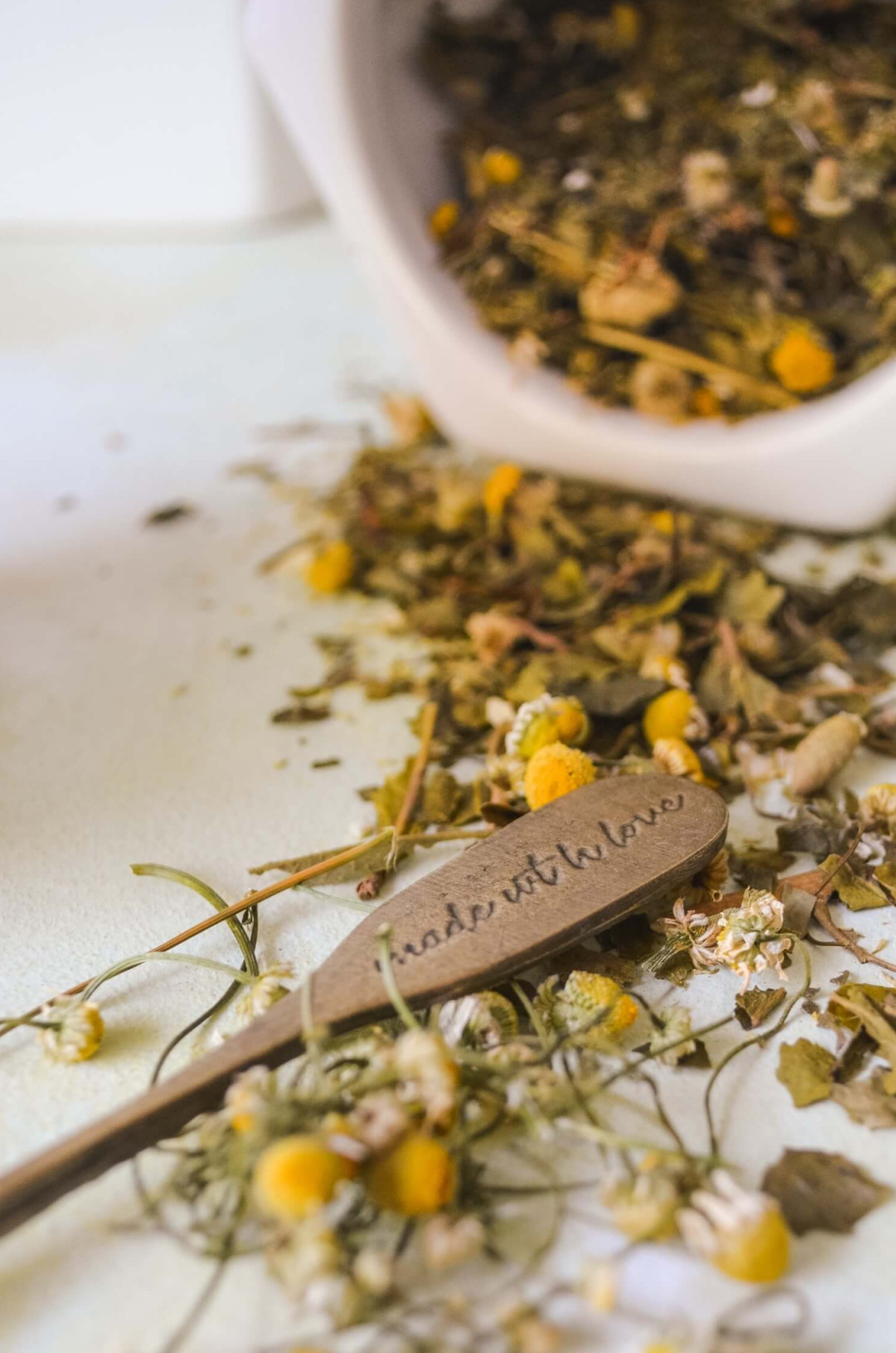PARTS OF PLANT USED: dried flower heads
ACTIVE INGREDIENTS:
Volatile oil → Anti-inflammatory
28 terpenoids
36 flavonoids → spasmolytic effect
52 additional compounds
bitter glycosides
α-bisabolol and cyclic ethers → antimicrobial (kill microbes like bacteria)
chamazulene and α-bisabolol → antiseptic (prevent the growth of microorganisms: bacteria)
coumarins, and more
PREPARATIONS: tea, tincture, elixir, topical, essential oil, hydrosol, bath/soak infusion
MEDICAL PROPERTIES:
USE and BENEFITS of Chamomile
Stomach, liver, and bowel (digestive) complaints, against intestinal colic and abdominal cramps, nausea, vomiting, indigestion, acid-reflux, ulcer-protective
menstrual pains → tea or topical
ADD/ADHD, agitation, excitability, nervousness
insomnia or other sleep troubles, anxiety, stress, depression → tea, essential oil aromatherapy
Allergies and food sensitivities
Heart palpitations, pain, tension, headaches
eczema, skin irritations, lesions, bites, stings, wound healing: shingles, boils → lotion, gel, spray
relieve mouth pain: stomatitis, gingivitis (gum disease), sores → mouthwashes (+ mint, sage, …)
eye inflammation
vaginal inflammation
teething for babies
baby colics
cosmetic: relaxing face masks, massage, sun-protective body oils, shampoos, soothing lotions, hydrosols, sunburns, diaper rash
aromatherapy
HOW DOES CHAMOMILE WORK:
by relieving inflamed or irritated mucous membranes that line your digestive tract
CAREFUL
Aster allergy, daisy allergy: Avoid it if you are allergic to these plants: chamomile, ragweed, daisies, marigolds, or chrysanthemums.
not recommended for women who are pregnant or breastfeeding - not enough information to determine whether it safe
Chamomile is considered safe, especially when used in amounts commonly found in teas (1-4 cups daily)
DRUG INTERACTIONS:
cyclosporine (used to prevent the rejection of organ transplants)
chamomile interferes with metabolism of cyclosporine through cytochrome P450
cyclosporine has narrow therapeutic range, so it is very important, that leves are in range, but chamomile tea can interfere with that levels
warfarin (blood thinner): chamomile contains small amount of coumarin, which is also blood thinner
Stop using chamomile two weeks before surgery: possible interactions with anesthetic drugs and because of mild blood thinning effect
PLANT DESCRIPTION: Chamomile
white ray flowers and yellow disk flowers in compact flower heads
branched, erect and hairless stem
fruit is a very small, yellowish, lightly curved achene.
similar to common wild chamomile:
recognize chamomile by its smell (wild chamomile looks similar but is without smell)
white ligules of common chamomile bend downwards
GROWING AND HARVESTING Chamomile
undemanding
grows spontaneously in uncultivated fields, on debris and roadsides, up to 1600 meters in height.
prefers dry, skeletal soils
propagation is made by direct sowing, in Summer, spreading 1-2 kg /hectare of seed,
the culture can last from 3 to 7 years
seed should not be buried, because this may cause seed dormancy (and missed germination), nor should it be spread too superficially, because it could be blown away by the wind.
flowering is layered: closed, open, and withered flower heads on the same plant
scraps
for production of essential oil: German varieties have more essential oil
